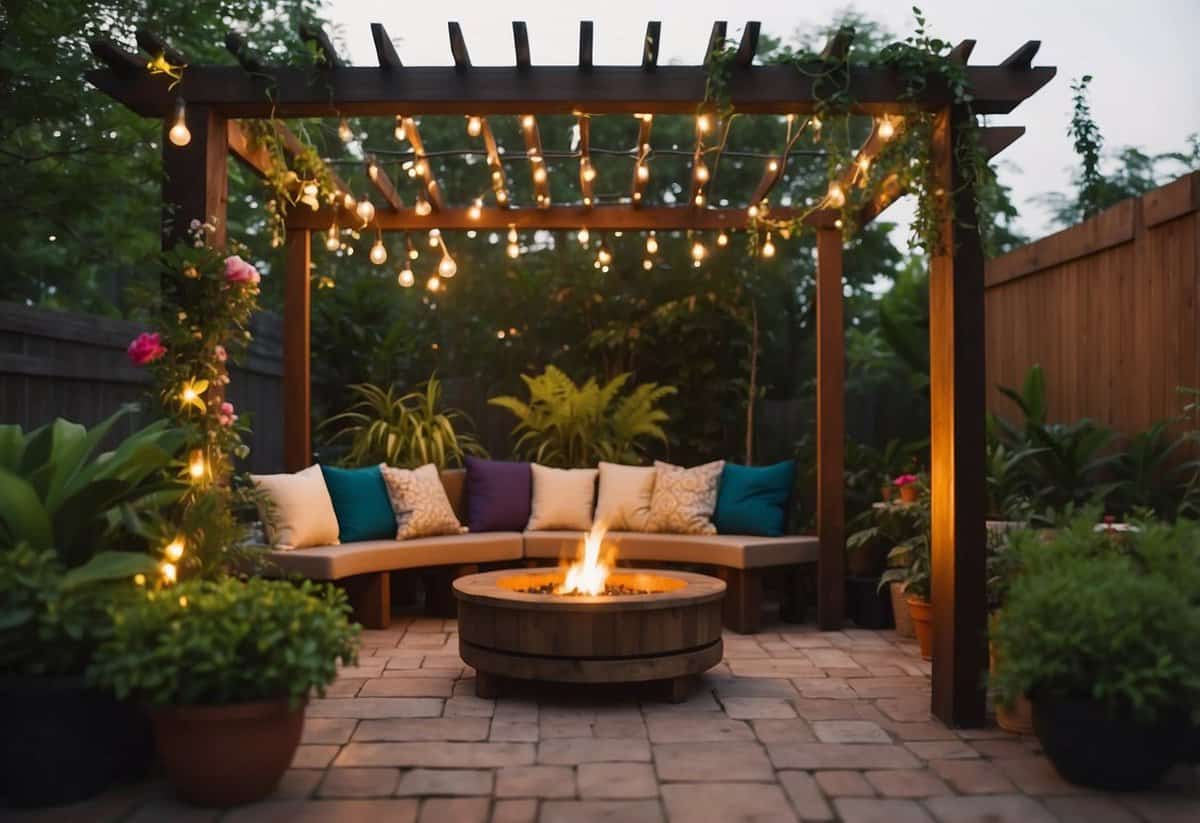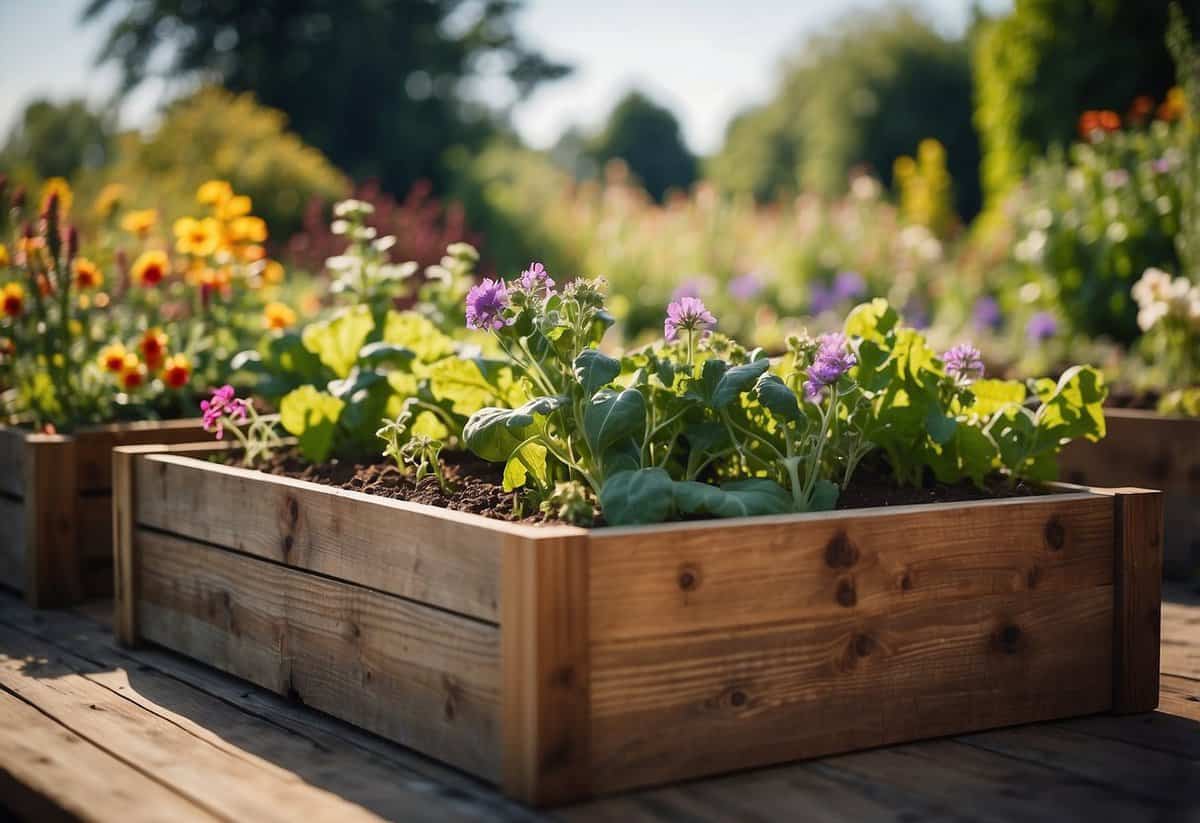Open Garden Ideas: Transform Your Outdoor Space
If you’re looking to transform your outdoor space, open garden ideas can provide endless inspiration. From creating colorful flower beds to setting up cozy seating areas, there are many ways to make your garden both beautiful and functional. Bold choices like vibrant plants and inventive layouts can completely change how you experience your yard.

How can you make your garden a personal oasis while still being practical? By considering a mix of greenery, decorative elements, and clever design tips, you can achieve a great balance. An inviting garden will not only add visual appeal but also enhance your outdoor living experience.
1) Vertical Herb Gardens

Vertical herb gardens save space and bring a touch of green to small areas. They can be placed on walls, fences, or balconies. These gardens are perfect for growing herbs like basil, mint, and parsley.
Use old pallets or hanging shelves with terra-cotta pots to create your vertical herb garden. Another idea is to repurpose an Ikea bar cart to make a mobile garden you can move around.
You can even try vertical bottle planters by cutting out the front part of a bottle and filling it with soil and your favorite herbs. Make sure to poke holes at the bottom for drainage.
2) DIY Pallet Planters

DIY pallet planters are perfect for adding charm to your garden. Wooden pallets are versatile and easy to work with. You can create simple square planters for a clean, organized look.
Turn a pallet into a vertical herb garden by securing small pots or attaching fabric pockets to the slats. This saves space and keeps your herbs easily accessible.
For a unique touch, try a cascading flower planter box. This design allows flowers to drape over the sides, creating a beautiful display in your garden.
3) Recycled Tire Flower Beds

Using old tires in your garden is a fantastic way to recycle and add a unique touch. You can stack one or two tires to create raised beds. Just fill them with soil and compost to grow your favorite plants.
Get creative with your tire flower beds. Paint the tires in bright colors or arrange them in interesting shapes. This will make your garden stand out and impress your visitors.
For a bigger impact, consider using large tires, like tractor tires, which can be eye-catching and provide more space for plants.
4) Stone Pathways with Moss

Stone pathways with moss add a charming, natural look to your garden. These pathways often use flagstones or stepping stones with moss growing in between. The moss not only looks beautiful but also helps prevent soil erosion.
To create one, lay your stones and plant moss in between. Mist the moss regularly to keep it healthy and green. You can enjoy a lovely, serene path that blends seamlessly into your garden. For inspiration, check out these stone pathway ideas.
5) Fairy Garden Corners

Creating a fairy garden corner can add magic to your backyard. Start with ferns, moss, and creeping thyme to create a soft, dewy ground cover. These plants work great in shady spots.
Add miniature accessories like fairy houses and tiny mushrooms. Use vining plants like morning glory or honeysuckle to add height and charm to your garden. For more ideas, visit fairy garden corner ideas.
Don’t forget to include colorful, blooming plants for contrast. This will make your fairy garden corner both enchanting and vibrant.
6) Container Water Features

Creating a small water feature in a container can add charm to your garden.
Start by choosing a large pot or container. Fill it with water and add aquatic plants like water hyacinth or water lilies.
Use rocks to keep the plant pots in place and prevent them from floating. Keep an eye on the water level and refill as needed.
Consider adding a small bubbler to keep mosquitoes away and ensure the water stays fresh. A container water feature is a beautiful and easy way to enhance your garden space.
7) Pergolas with Climbing Vines

Pergolas are a fantastic addition to any garden. They provide shade and a beautiful structure for climbing vines.
You can enhance the look with vibrant plants like clematis or honeysuckle. These vines add color and fragrance, making your space more inviting.
For an evening atmosphere, hang string lights from your pergola. It creates a cozy spot for dining or relaxing outdoors.
For more inspiration, check out these Beautiful Pergola Ideas.
8) Hanging Teacup Gardens

You can create charming hanging teacup gardens to bring a touch of whimsy to your space.
To get started, you’ll need some sturdy teacups. Drill a small hole at the bottom for drainage. Use a strong, thin rope or wire to hang them securely.
Fill the cups with potting soil and choose small plants like herbs or succulents. Hang them near a window for sunlight and enjoy your beautiful, floating garden!
For more ideas, check out these cute teacup gardens.
9) Raised Beds with Reclaimed Wood

Using reclaimed wood for raised beds adds charm and helps the environment.
Reclaimed wood has a beautiful weathered look and is perfect for rustic garden designs. It’s also budget-friendly since you can often find it for free or at a low cost.
To make your raised beds with reclaimed wood, ensure the wood is free of chemicals or pests. This way, your plants stay safe and healthy. For more design ideas, visit Homebuilding.
10) Repurposed Furniture Planters

Repurposing old furniture into planters is a creative way to bring new life into your garden. Imagine turning an unused piano or a forgotten chair into unique plant holders.
For example, an old piano can become a stunning centerpiece in your garden. Just place some soil and plants on the keys and in the body of the piano.
Another fun idea is transforming a worn-out chair into a succulent planter. Remove the seat and add a pot or some soil to hold your plants.
Benefits Of An Open Garden

An open garden design offers several advantages such as enhancing the look of your space, improving air flow, and supporting a diverse range of plants and wildlife.
Enhanced Aesthetics
An open garden design can significantly improve the visual appeal of your yard. With fewer barriers and more free-flowing spaces, your garden appears larger and more inviting.
You can strategically place plants, flowers, and decorative elements to create a more pleasant and harmonious look.
This open layout allows you to showcase more plants and design features, giving you the flexibility to create focal points and highlight different areas of your garden.
It also allows for better integration with your home’s architecture and outdoor living spaces, creating a cohesive and beautiful environment.
Improved Air Circulation
One of the key benefits of an open garden is improved air circulation. Without walls or tall barriers, air can move more freely through the space. This can help keep your plants healthier by reducing the chances of mold and mildew growth.
Improved air flow also makes your garden area more comfortable for you and your family, especially during hot summer days. A breezy, open environment can be refreshing and helps lower the temperature naturally.
Good air circulation also supports better pollination. Pollinators like bees and butterflies can move more easily from plant to plant, ensuring your flowers and crops thrive.
Increased Biodiversity
An open garden can support a wider range of plants and wildlife, increasing biodiversity in your space. With more open areas, you have the opportunity to plant a diverse range of species, which can attract different insects, birds, and small mammals.
This variety creates a healthier ecosystem, as different plants and animals play unique roles in maintaining balance. For example, certain plants can attract beneficial insects that help control pests naturally.
You can also include features like bird feeders or water sources to attract more wildlife, making your garden a lively and dynamic space.
Incorporating native plants can further enhance biodiversity, as they are well adapted to the local climate and soil conditions. This makes your garden more resilient and sustainable over time.
Design Principles For Open Gardens

When designing an open garden, focus on using natural light effectively, choosing the right plants for your space, and ensuring a smooth flow throughout the garden. These elements help create a beautiful and functional outdoor area.
Utilizing Natural Light
Natural light is vital for open gardens. Sunlight enhances plant growth and highlights different garden areas. First, observe how sunlight moves through your garden during the day. This can help you position plants and garden structures to maximize light exposure.
Use reflective surfaces like mirrors or light-colored materials to bounce light into shaded areas. Color can also impact the perception of light. Bright and warm colors can make spaces feel more open and inviting, while darker colors create a cozy atmosphere.
Selecting The Right Plants
Choosing the right plants for your open garden ensures that it remains vibrant and healthy. Focus on selecting plants that thrive in your climate and soil type. Native plants are often a great choice because they require less maintenance and support local ecosystems.
When picking plants, consider their mature size to prevent overcrowding. Mix plants with different leaf shapes, colors, and textures to create visual interest. Use the principles of balance and proportion where larger plants are spaced with smaller ones to maintain harmony in your design.
Creating Flow And Continuity
Creating flow and continuity in your open garden makes it more inviting and easier to navigate. Use paths, stepping stones, or gravel walkways to guide visitors through the garden naturally. Well-defined paths help establish a clear structure and can be made from materials like stone, brick, or wood.
Incorporate repetition and unity by repeating certain plants or design elements throughout the garden. This repetition can tie various parts of the garden together. Ensure that the garden elements transition smoothly by arranging plants and structures in a way that the eye can easily follow.







